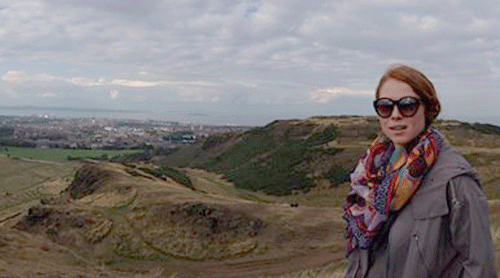This past Fall semester I was lucky enough to study abroad at the University of Edinburgh in Scotland. My family heritage hails from this northern land, and envisioning my ancestors traipsing through the rugged wilderness that makes up the county was fuel to my already exuberant imagination.
At the University I was enrolled in two art history courses: The Dutch Imagination: Painting in the Time of Jan Van Eyck and Victorian Architecture. While the opportunities provided by my location were unparalleled (my architecture course was mainly held in Victorian buildings throughout the city), I found myself more and more wistful for the dense, sometimes mind-boggling theoretical practices our Denison department values, and it took being away for a semester to understand the importance of what is being taught. We examine art not as a cultural phenomenon, but as an integral expression of time and space, and at its core, we study art as a dialogue of what it means to be human.
As anyone will tell you, studying abroad is a life altering experience, and I went in open-eyed and ready to be transformed. Yet, almost the exact opposite happened. As I traveled through the country, I found myself not only entranced by my surroundings, but also gaining an understanding of the interweaving threads that connect the land to the people. Thus, I discovered myself becoming even more substantiated in the person I had always been as I realized that I wanted to completely immerse myself in the study folklore; stories of the past.
This broader dialogue of art’s meaning is nowhere more aptly represented than in stories and culturally rooted legends, and I am lucky to have discovered my academic passion early enough to be guided along the path of discovery with the help of our marvelous department. The theoretical framework of my studies, combined with my travels, has propelled me into a world of words and images that I believe will last a lifetime.






